Art Gallery Exhibition Focuses on Innovative Indigenous Works
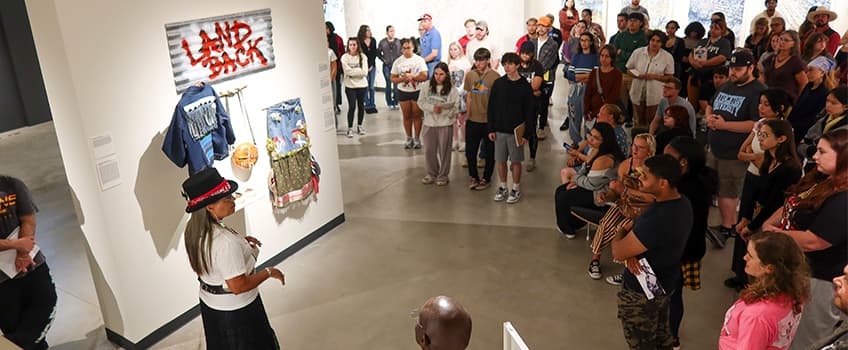
Denise “Bright Dove” Ashton-Dunkley of the Nanticoke/Lenni-Lenape Tribal Nation was one of the three Indigenous artists who led an intimate tour of her artwork displayed in the Stockton Art Gallery's two-floor exhibition "Indigenous Approaches, Sustainable Futures" on Tuesday, Sept. 17.
Galloway, N.J. – “Indigenous people are more than just what you read about in your false and colonial history books or a concept of the past. In 2024, we are contemporary.”
This and more gems of wisdom were dropped by Indigenous artist Denise “Bright Dove” Ashton-Dunkley during Sept. 17’s Artist Talk & Workshop in the Stockton University Art Gallery.
Ashton-Dunkley of the Nanticoke/Lenni-Lenape Tribal Nation is one of more than 25 local and international artists featured in the new two-floor exhibition, “Indigenous Approaches, Sustainable Futures.” She and fellow tribe member Tyrese “Bright Flower” Gould Jacinto and Jeremy Dennis of the Shinnecock Indian Nation led participants on a tour of the exhibition and talked about the inspiration behind their featured works.
According to Ashton-Dunkley, her piece, “Land Back,” is meant to challenge the viewer to acknowledge and consider the concepts of land reclamation and the significance of Indigenous traditional and ecological knowledge, especially as the world reckons with the current climate crisis.
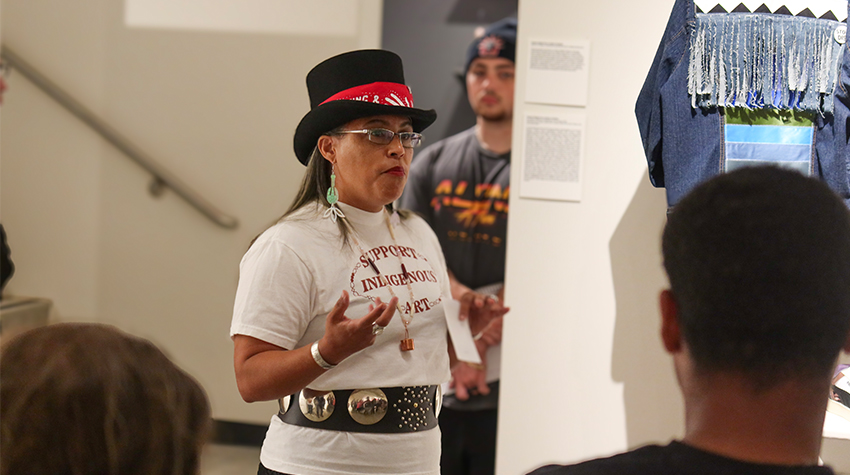
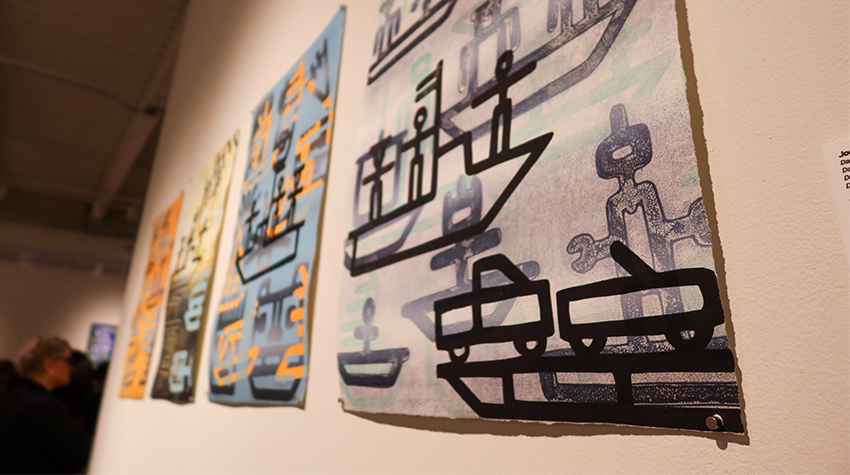
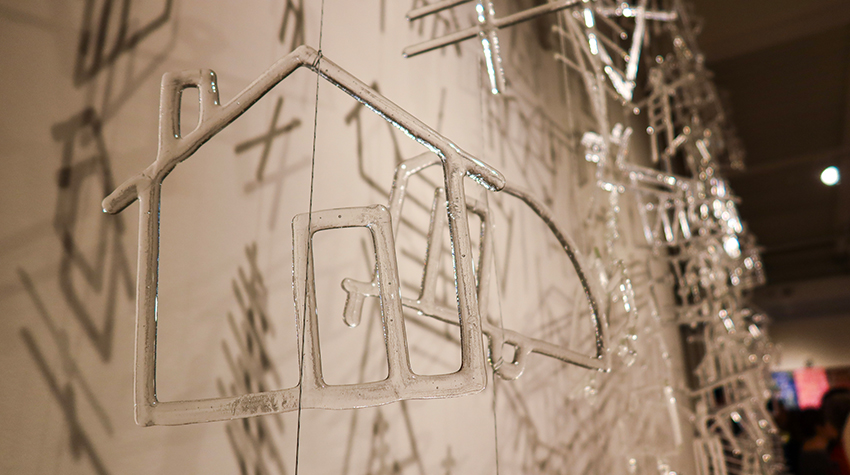
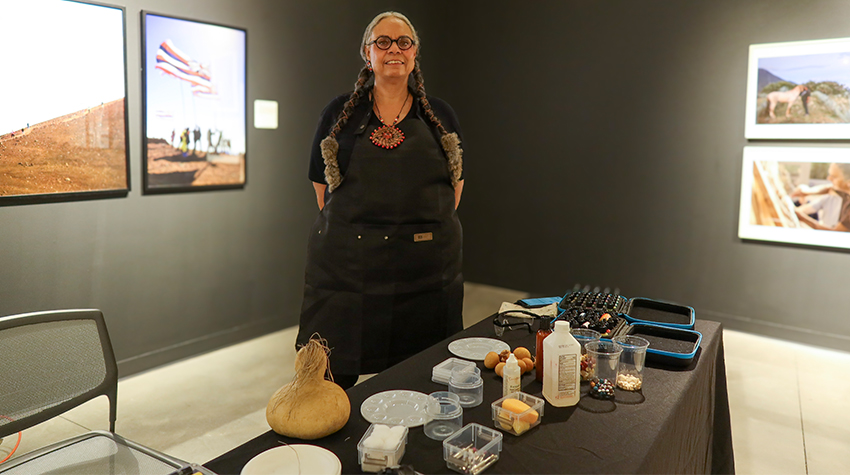
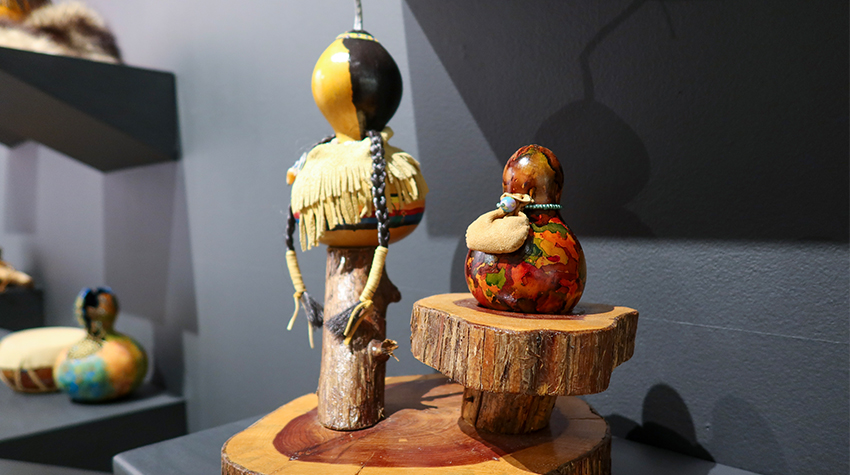
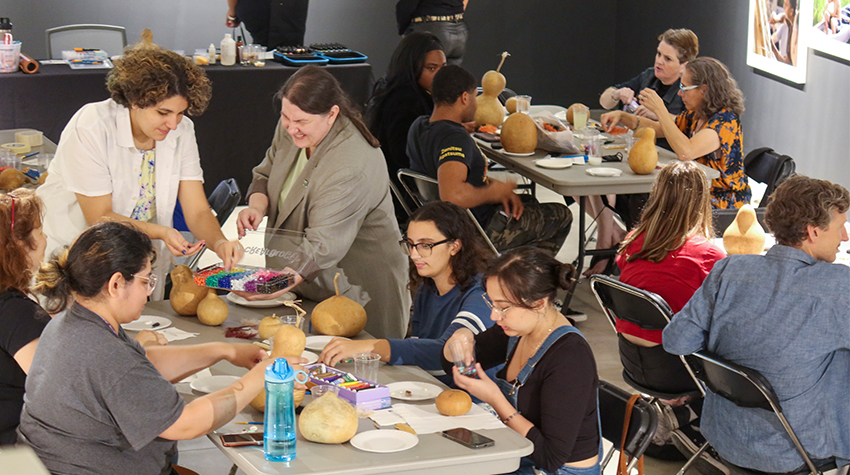
“We hold this knowledge, and we’ve always been willing to share it. There’s no need to try to continue erasing us via MMIW (Missing and Murdered Indigenous Women), genocide or forced sterilization,” Ashton-Dunkley said. “It all comes down to you voting, finding out what these politicians stand for and holding them accountable to their promises. Help us with your voice and steward these lands.”
Gould Jacinto’s gourd art is visually striking; lights reflect off of the colorful beads that adorn the painted gourds, creating rainbow shadows on the gallery’s walls and floors. Gould Jacinto explained that each piece comes from the same source of inspiration — nature and how it connects the past with the present.
“I use the seed of my ancestors, and I plant it in the soil, which is the dust of my ancestors. I water it with the same water that ran through their bodies, and now, it runs through that plant and now through my art. It creates a sacred symbiosis and an appreciation of being one with nature,” Gould Jacinto said.
Indigenous Peoples' Day at Stockton
Dennis’ portraits captured three Shinnecock tribal members – Chenae, Tohanash Tarrant and Nicky Dennis-Banks – who were also interviewed about what their Indigenous identity means to them for the Shinnecock Portrait Project. During his talk, he shared that his inspiration for becoming a photographer came from an 1884 image of the Shinnecock people that he saw, entitled “The Last of the Shinnecock Indians.”
The photo is widely considered to be one of the first-ever photos taken of the tribe.
“Somehow, the first documentation of us is considered the last,” Dennis said. “A lot of what I’m trying to do as an artist is bringing acknowledgment and visibility to us and trying to use art as a vehicle for that. The Native history that we learn is not just Native American but a shared history, so I try to use beautiful imagery to enter into these difficult conversations.”
Following the talk and panel, Gould Jacinto led a workshop on the art and history of gourd painting. The Art Gallery and the Noyes Arts Garage in Atlantic City plan to host more workshops like Gould Jacinto’s throughout the fall term. Future topics include seed printing, natural plant dye and herb preservation.
Additionally, Stockton is set to commemorate Indigenous People’s Day on Monday, Oct. 14, with an all-day celebration across campus that will include exhibition tours, a performance by a Lenni-Lenape youth group outside of the Multicultural Center, a documentary screening in the Campus Center Theatre and an artist panel discussion in the Art Gallery.
“I’d worked with a number of Indigenous artists over the years, and I’d started to see the connections between their works and how they viewed tradition and creation. For this exhibition, I wanted to highlight Indigenous experiences through contemporary art and explore these intersecting themes of land, identity and sustainability,” said Ryann Casey, Stockton Art Gallery’s exhibition coordinator and lead curator for “Indigenous Approaches, Sustainable Futures.”
– Story by Loukaia Taylor
– Photos by Lizzie Nealis
New Program Centers Indigenous Cultures and Identities
February 26, 2024
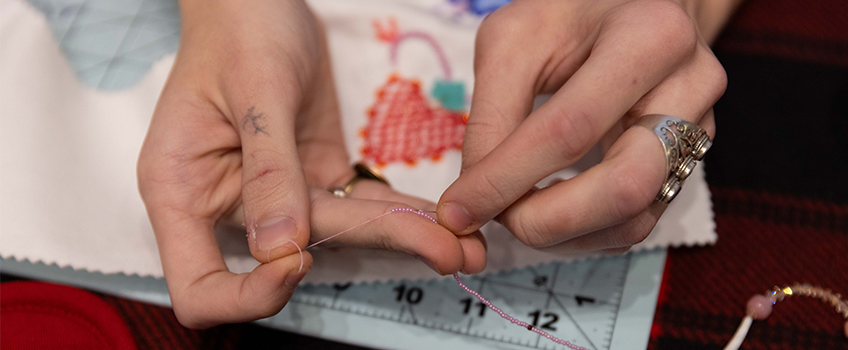
Galloway, N.J. – Students, staff and faculty on the Galloway campus gathered in the Campus Center Board of Trustees Room on Feb. 22 to celebrate and learn more about Indigenous culture.
Guests River Webb and Claudia Haddad, members of the Nez Perce & Meskwaki (Webb) and Mi’kmaw (Haddad) Northeastern Woodland tribes, presented to the audience the ceremonial and educational role of being a 2 Spirit individual and displayed their traditional beadwork.
During their presentation, Webb – who was recently given the title “International 2 Spirit Ambassador” – explained that the 2 Spirit identity is a contemporary word that used to replace outdated and offensive terms. The identity, which has various roots in history due to the diverse array of different Indigenous/Native tribes, has existed forever.
“[2 Spirit] is a word meant to unify different nations - we all have our own words for 2 Spirit people in our languages, and their roles or descriptions might look different,” Webb shared. “People like us have existed and carried this role in our culture forever, as we are part of our culture. It's not a new identity, but this word, and the unity it provides for us between Tribal Nations, that is what is new, and what the word provides for us.”


